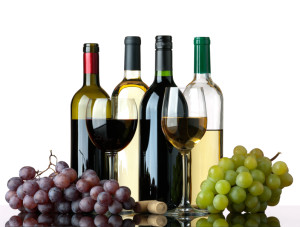While a budding wine enthusiast may dismiss wine blends as diluted, muddied or less desirable than pure varietals, they can in fact be a wonderful way to understand and enjoy the characteristics of different varieties of grapes. Blends can be a valuable addition to your wine collection because, when it is done right, a high end blending is able to create a more complex and enjoyable wine. Blending can change and enhance the flavor, texture, color, body, finish, and aroma of a wine by combining grapes with differing qualities in varying proportions. The strengths of each grape can be combined in complimentary ways to create a wine that is superior to the wines from which it is blended.
So what, Exactly, is the Definition of a Blend?
A varietal may contain grapes from different plots or vineyards, but the majority of the grapes will all be the same type of grape. In the United States, a wine must consist of at least 70 percent of the same type of grape to be classified a varietal. Blends, on the other hand, often contain just 40 to 50 percent of the dominant grape. The remainder of the wine is a mix of several other types of grape. The blends are mixed in steel tank and generally aged in oak barrels before bottling. Some winemakers produce barrels of specific varietals (Malbec, Merlot, etc.) for the purposes of blending later, while others prefer to mix the grapes and ferment the blended wine together. Most blended wines are red, though some white blends exist, particularly in Europe; varietals which are very unlikely to be blended include Pinot Noir and Riesling. Additionally, while many blends are vintage blends, meaning that they are made of different types of grapes that were all grown in the same year, some are non-vintage blends. These blends are most commonly port or sparkling wines such as Champagne, and use grapes grown in different vintages in order to utilize their different tastes and tannins.
Wine Knowledge and Some History
Though the potential for creating different blends is almost limitless, many blends use grape types in similar ways to create their final product. Most Argentinian blends use Malbec as the dominant grape; Cabernet Franc or Sauvignon can add tannins and body to the wine, while Merlot may be used to add color and smoothness. Bordeaux, arguably the most famous blended wine, contains Cabernet Sauvignon for tannins and body, Merlot for roundness, and Cabernet Franc for color and aroma; wines with similar ingredients which are not made in the Bordeaux region are often called meritage, a combination of merit and heritage. Another popular type of blended wine is known as Super Tuscan because of its origins in 1970s Italy among vinters that were flauting Italy’s strict blending standards and creating unique red blends. Many Californian and other American wines are a blend even though there may be only one type of grape on the label; for example, a bottle labeled Merlot may contain 25 percent Cabernet. Some wine blends are even a mix of red and white wine; for example, in France the red grape Syrah and white grape Voignier are combined to create a blend called Côte-Rôtie.
Do Your Research
Blends can be a great way for a wine lover to simultaneously expand their knowledge and taste buds. By researching which grapes went into a specific blend, what steps were taken by the winemaker during the aging process, and what trusted reviewers say about the blend, you can be sure to select wines that will enjoy and excite you. As you begin to explore red, white, and mixed blends of all different types, you will learn more about the qualities of different wine grapes and how they work together to create the characteristics you appreciate.

